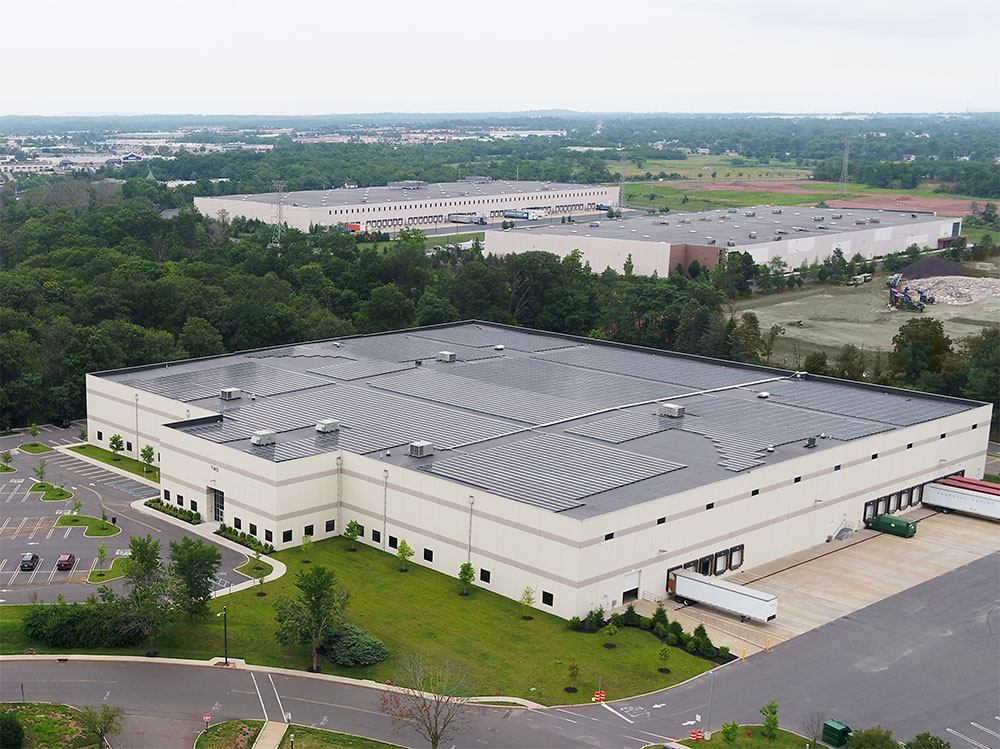Solar 101: How CRE Owners Are Increasing NOI with a Roof Lease
As a commercial property owner, the effort to improve asset performance and increase revenue is constant. What if your empty rooftop could generate steady, long-term income—without upfront costs or operational disruption?
With no capital investment, property owners are transforming unused rooftop space into financial assets while supporting clean energy goals nationwide.
Industry Leaders Are Monetizing Commercial Rooftop Portfolios
Major industry players, including Prologis, Principal, PGIM, and Heitman, have partnered with Solar Landscape to convert empty rooftops into revenue-generating assets. With over 50 million square feet of renewable energy installed, we are recognized as the largest and most trusted commercial solar developer in the United States.
Understanding Rooftop Solar
Commercial rooftop solar development typically follows two primary models: behind-the-meter (power to your building) and front-of-the-meter (power to the grid), each with distinct financial and operational implications for property owners.
- Behind-the-meter (BTM) solar systems are limited to tenant energy usage and therefore constrain the financial upside for property owners.
- Front-of-the-meter (FTM) solar offers a simpler structure—Solar Landscape leases roof space from the property owner to install and manage a rooftop solar system.
Why Rooftop Solar?
- Zero CapEx: Solar Landscape finances, designs, builds, and owns the system.
- Your Most Reliable Tenant: Solar Landscape provides consistent lease payments to the property owner while selling power generated to the utility.
- Advance Decarbonization Goals: meet state and federal sustainability standards while improving property marketability to potential tenants.
- Worry-Free Installation: leasing your roof for solar does not void your roof warranty.

Is Your Property a Good Fit for Rooftop Solar?
If your property meets the right criteria, your rooftop could be a new revenue-generating asset. The best properties for solar installations share a few key characteristics:
- Rooftop Area: Ideally, rooftops should exceed 30,000 square feet to reduce installation costs per watt, increasing the value of your lease payments.
- Location: Real estate assets in states with favorable solar programs—New Jersey, Maryland, Pennsylvania, Minnesota, New York, Massachusetts, and Illinois— are particularly well-positioned to benefit.
- Commercial and Industrial Buildings: Warehouses, industrial facilities, self-storage units, and commercial properties make excellent candidates due to their large, unobstructed rooftops and minimal operational disruptions.
Nice-to-Have’s
- Newer Roof. Roofs under seven years old are ideal. However, aging roofs aren’t disqualified. Solar Landscape has helped clients coordinate and finance roof replacements by integrating costs into the project and using lease payments to offset expenses.
- Flat, Unobstructed Roof: While both flat and pitched roofs can support solar installations, flat roofs with minimal obstructions maximize usable panel space and system efficiency, improving overall project viability.
If your properties meet any of these criteria, now is the perfect time to explore the benefits of a rooftop solar lease.
Take Advantage of this Opportunity
For multi-tenant property owners, leasing roof space is like securing a stable, long-term tenant. Lease payments continue as long as the solar panels generate power, providing a dependable revenue source without the typical challenges of tenant turnover.
As local electrical grids reach capacity and new energy mandates drive demand, lease rates may decrease—making now the best time to secure maximum financial benefits.
Ready to Get Started?
Contact Solar Landscape for a free site assessment to see how much value you could add to your commercial portfolio.
Opportunities and benefits described in this post are intended solely for participants within the NAI Global network.
